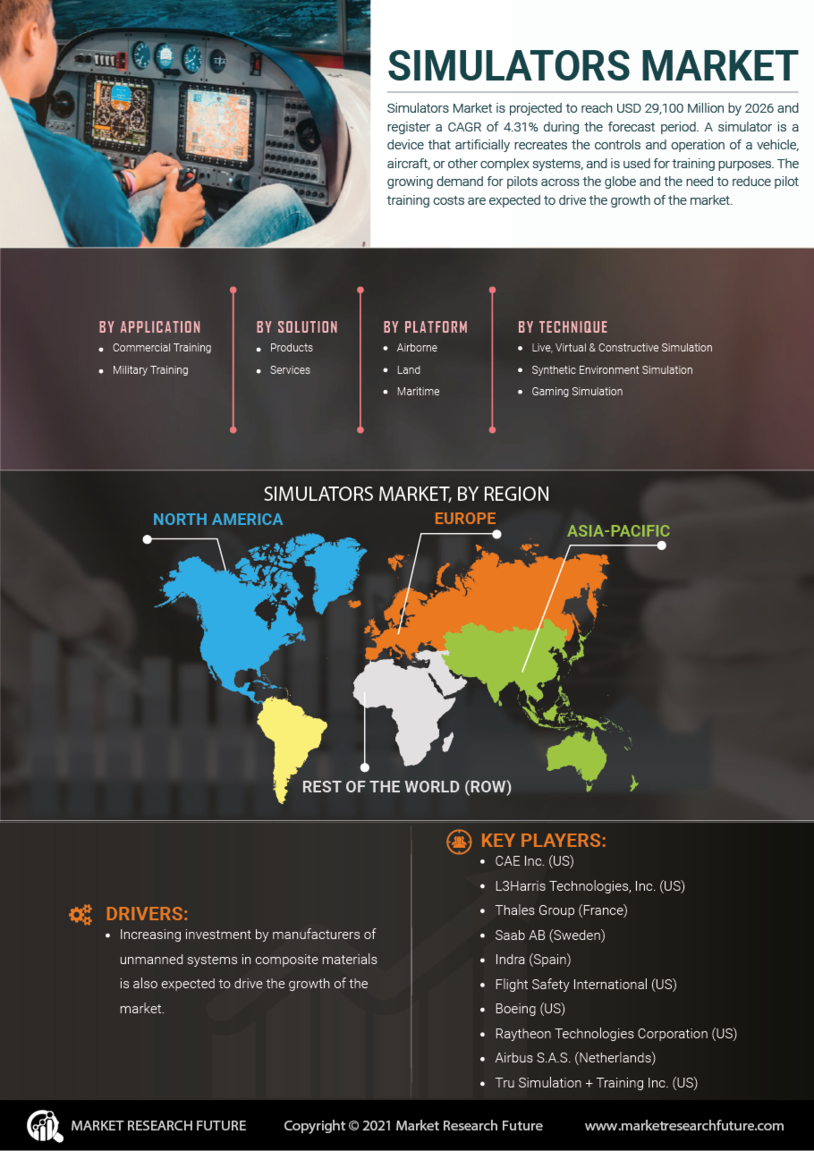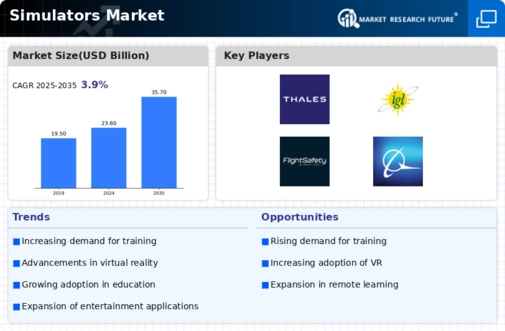Simulators Market Summary
As per Market Research Future Analysis, the Global Simulators Market was valued at USD 23.61 Billion in 2024 and is projected to reach USD 36.04 Billion by 2035, growing at a CAGR of 3.92% from 2025 to 2035. The market is driven by increasing demand for military and commercial training applications, alongside significant investments in R&D for simulator technology. The military training segment leads the market, fueled by rising defense budgets and security concerns. North America holds the largest market share, with the U.S. being a key player due to its advanced military training programs. The Asia-Pacific region is expected to exhibit the fastest growth, driven by the expanding airline sector in countries like China and India.
Key Market Trends & Highlights
Key trends driving the simulators market include advancements in technology and increasing applications across various sectors.
- Military training segment dominated the market, driven by rising defense spending and security concerns.
- North America is the largest market, with the U.S. leading in military training programs.
- Asia-Pacific is expected to grow at the fastest CAGR, fueled by the airline sector's expansion in China and India.
- Full flight simulators generated the most revenue, driven by the demand for new pilots and aviation safety.
Market Size & Forecast
| 2024 Market Size | USD 23.61 Billion |
| 2035 Market Size | USD 36.04 Billion |
| CAGR (2025-2035) | 3.92% |
Major Players
Key players include CAE Inc. (US), L3Harris Technologies Inc. (US), Thales Group (France), Boeing (US), and Airbus S.A.S. (Netherlands).















